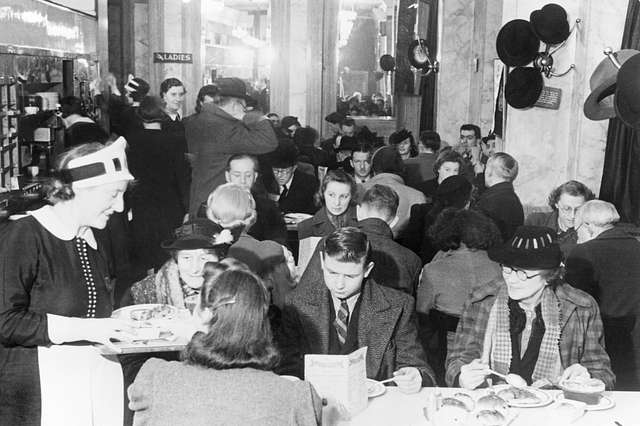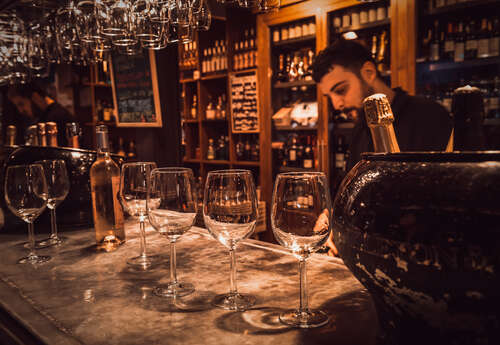
This might surprise a few people, but the reductive style of sparkling wine does not always fill me with joy. While I see no sense in or derive any fulfilment from its illegitimate half-brother, the so-called oxidative style of sparkling wine, the reductive style is not always perfect. It can, for example, give sulfidic aromas of various shades, some of which are decidedly less joyful than others.
I strongly believe a sparkling wine should respect and reflect its reductive upbringing, but I do not want it to be dominated by reductive aromas any more than I want it dominated by the aromas of any other specific process or interaction. The fruit should always be paramount and even the yeast-complexing effect of the fruit ought to be delicate and understated. I don’t want anything to hit me in the face, especially as soon as it is released. I want elegance and finesse: subtle nuances that are barely discernible and take ages to evolve and manifest.
All bottle-fermented sparkling wines are products of a second fermentation that consumes every molecule of oxygen, creating the anaerobic environment in which the dead yeast cells work their magic. Even if the base wine had originally been fermented in oak or subjected to other deliberately oxidatively handling, it is the second fermentation, the anaerobic environment it creates, and the effect of autolysis that determines and defines its intrinsically reductive style. If a sparkling wine has been well-made up to this juncture, it will only be when a producer fails adequately to protect the wine from the oxidative shock of disgorgement that it will deviate from its reductive course and succumb to premature oxidation.
Adequate protection involves sulfur, and the amount added will vary according to existing free SO2 levels, but within the parameters of healthy SO2 regimes in Champagne, most will add between 20mg/l and 40mg/l. Other numbers can work. This is merely an overview of the final SO2 dosage currently deployed.
Foiling gunpowder plots
One feature of the liqueur d’expédition is that it tends to exaggerate its components, particularly during the first two or three years following disgorgement. This can be put to good use if a sparkling wine has not developed as the winemaker had intended. The dosage might only represent 1.5% of the total wine, but if, for example, it needs freshening or lightening up with a very young, crisp Chardonnay, using such a wine as the base wine for the dosage can give the impression that 15% of Chardonnay has been added. The problem is that this exaggerated effect can work on all the components, thus a sparkling wine can end up with overtly sulfidic aromas.
Virtually all post-disgorgement aromas are sulfidic, but some sulfidic aromas are more obvious and less enjoyable than others. If the sulfur regime is a healthy one and every aspect of the winemaking is finely tuned, most of the sulfidic aromas can be sub-threshold and will take many years to evolve into smooth notes of fleeting beauty. However, not all sulfidic aromas come from the SO2 in the dosage. Some can be by-products of the second fermentation yeast. A combination of yeast- and dosage-derived sulfidic aromas can be extreme, going well beyond the burned-match aroma of molecular sulfur to gunpowder or fireworks. Sometimes the aromas are so strong that they obscure the house style, but paradoxically, at other times they may be equally strong, yet of such distinctive character that they shout the name of their producer (probably due to the use of an equally distinctive in-house second fermentation yeast culture).
The Holy Grail of sparkling wine
When encountered, gunpowder is sometimes described as toasty, but true toasty aromas are mellow and the gunpowder aroma is far more aggressive. Gunpowder is in fact the precursor to a certain type of toasty aroma, but one that takes two or three years rather than a decade or more of post-disgorgement aging to develop, thus it will always be hard-edged compared to the longest evolving, truly toasty notes.
The more gunpowdery a sparkling wine is, the further away from optimum drinking it will be. If the aromas have a raw and fiery edge, the wine has been released much too early.
Gunpowdery sparkling wines were acceptable up to about ten years ago, but they are boringly repetitive for anyone wanting to experience the cutting-edge sparkling wines of today. As for raw-edged and fiery gunpowder aromas, I dislike them almost as much as oxidative aromas (almost, but not quite!).
To produce a sparkling wine that respects its reductive DNA and yet avoids sulfidic aromas is no easy task, but I know it is not impossible because I taste, judge, and drink such wines every year. In fact, I am drinking one as I write this—Louis Roederer 2013 Blanc de Blancs. More times than not, Roederer’s chef de caves Jean-Baptiste Lécaillon has proved to be a master of this style, but it is not an exclusivity of Roederer or indeed of Champagne. Camel Valley Rosé regularly achieves the pristine-reductive style.
When successful, a pristine-reductive style provides a suitable medium for autolysis, but it takes a while for the fruit to show its yeast-complexed potential and much, much longer for a true, mellow toastiness to evolve. Without the sulfidic aromas getting in the way, it is possible to consume such wines when they are younger and fresher, yet its development from that point is slower, and the slower that any wine’s complexity evolves, whether with bubbles or not and of any color, the more finesse that complexity achieves. Faster is coarser.
And so, we have the Holy Grail of sparkling wine, but trying to hit that sweet spot is not without its dangers. Dialing down the SO2 risks oxidation.






